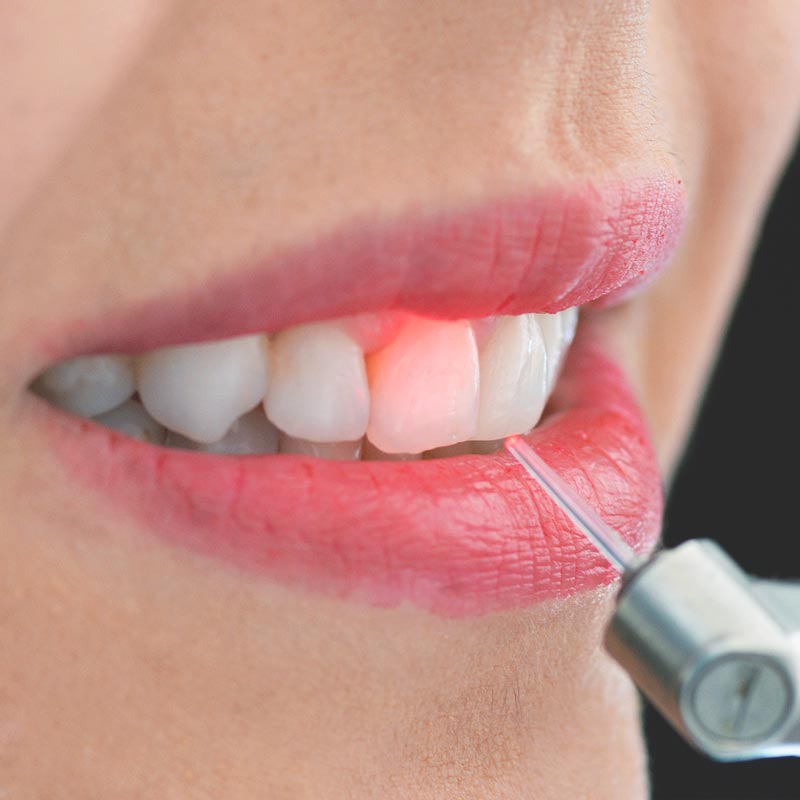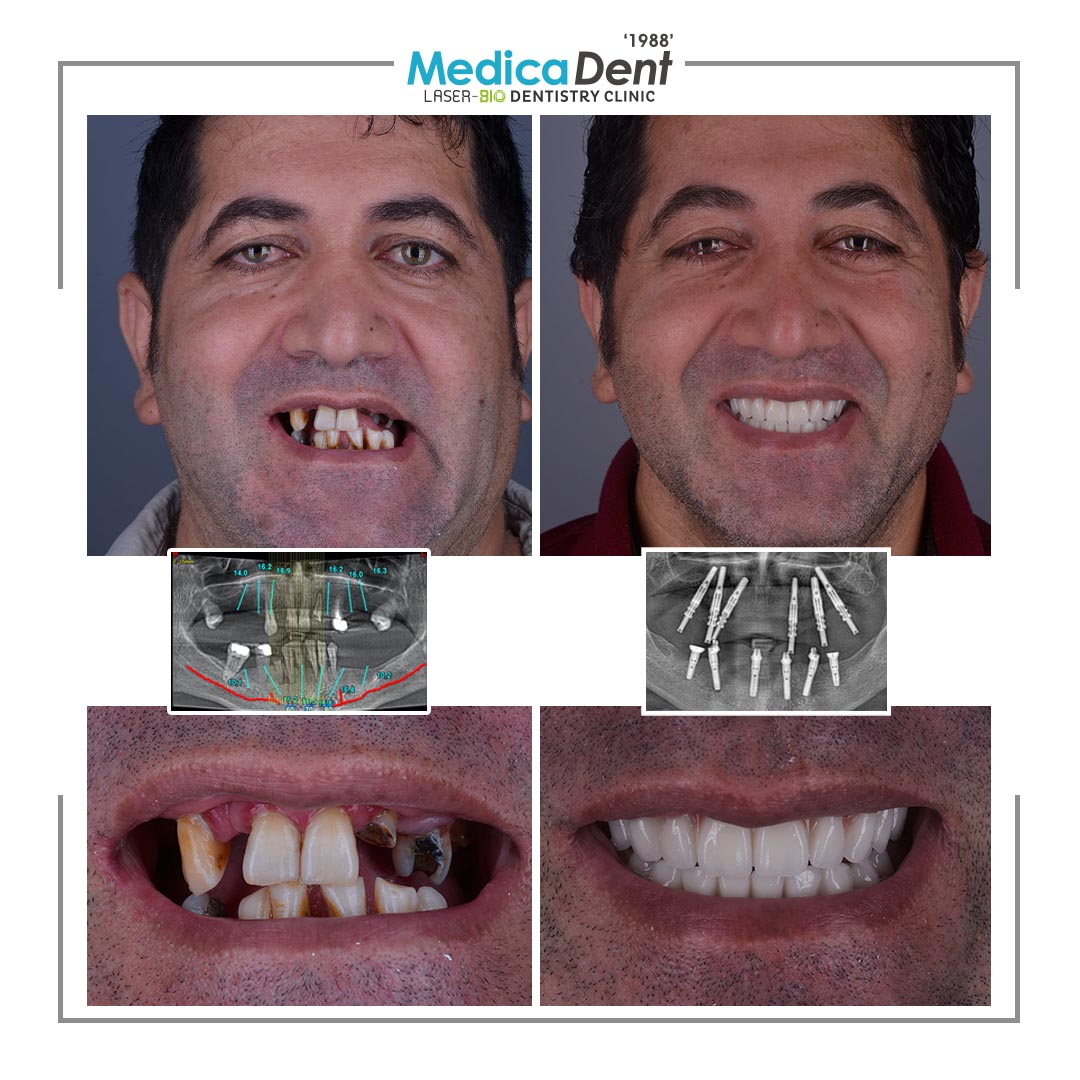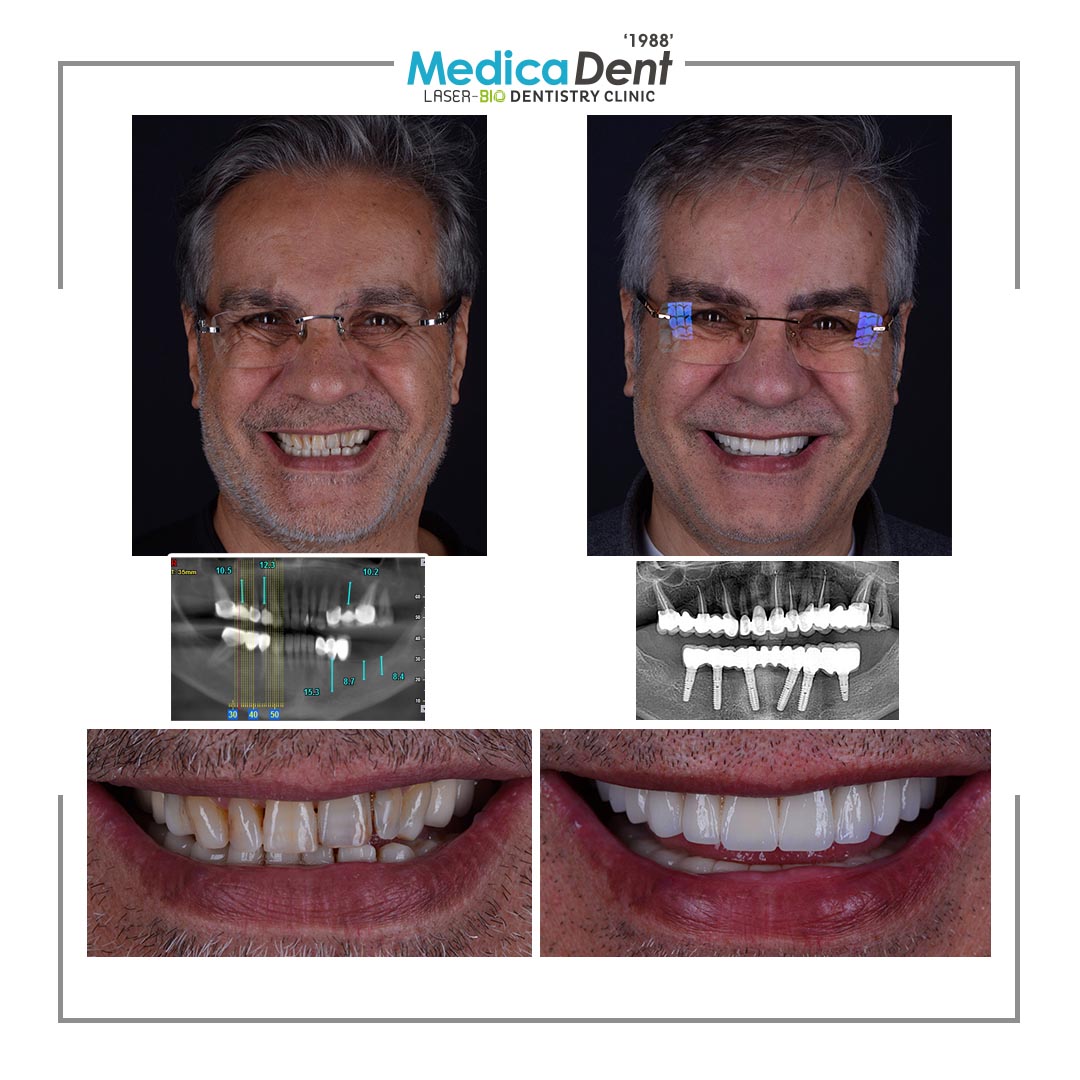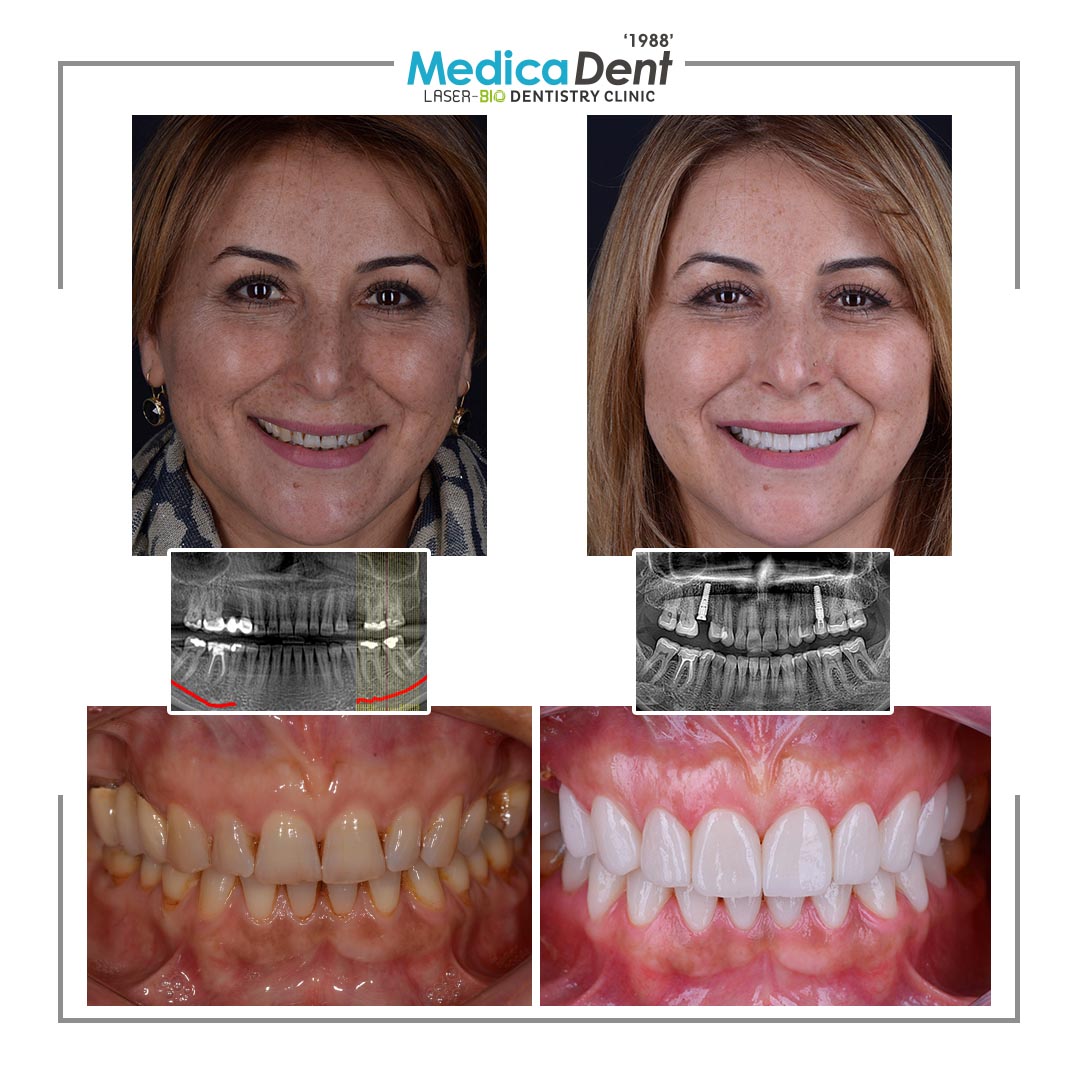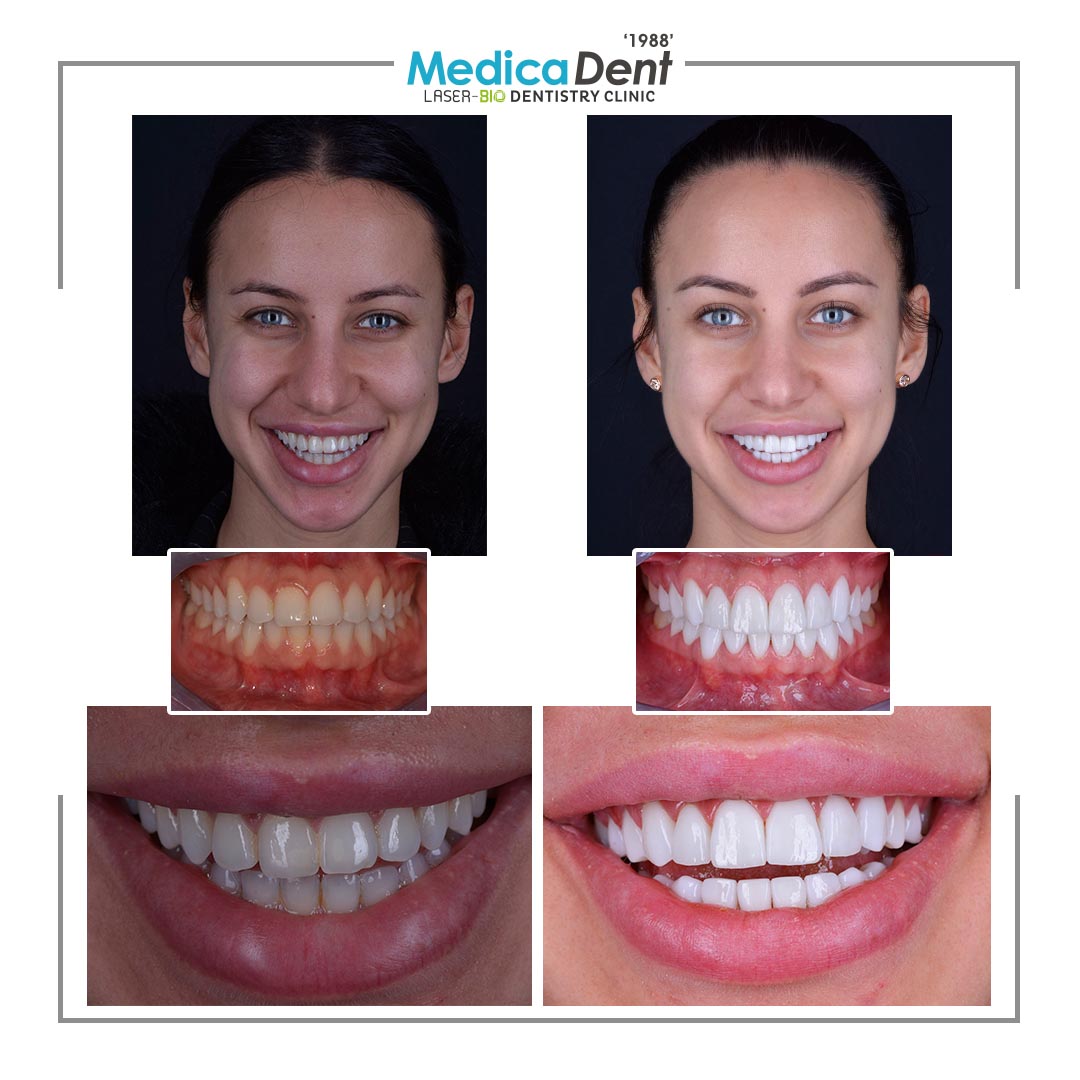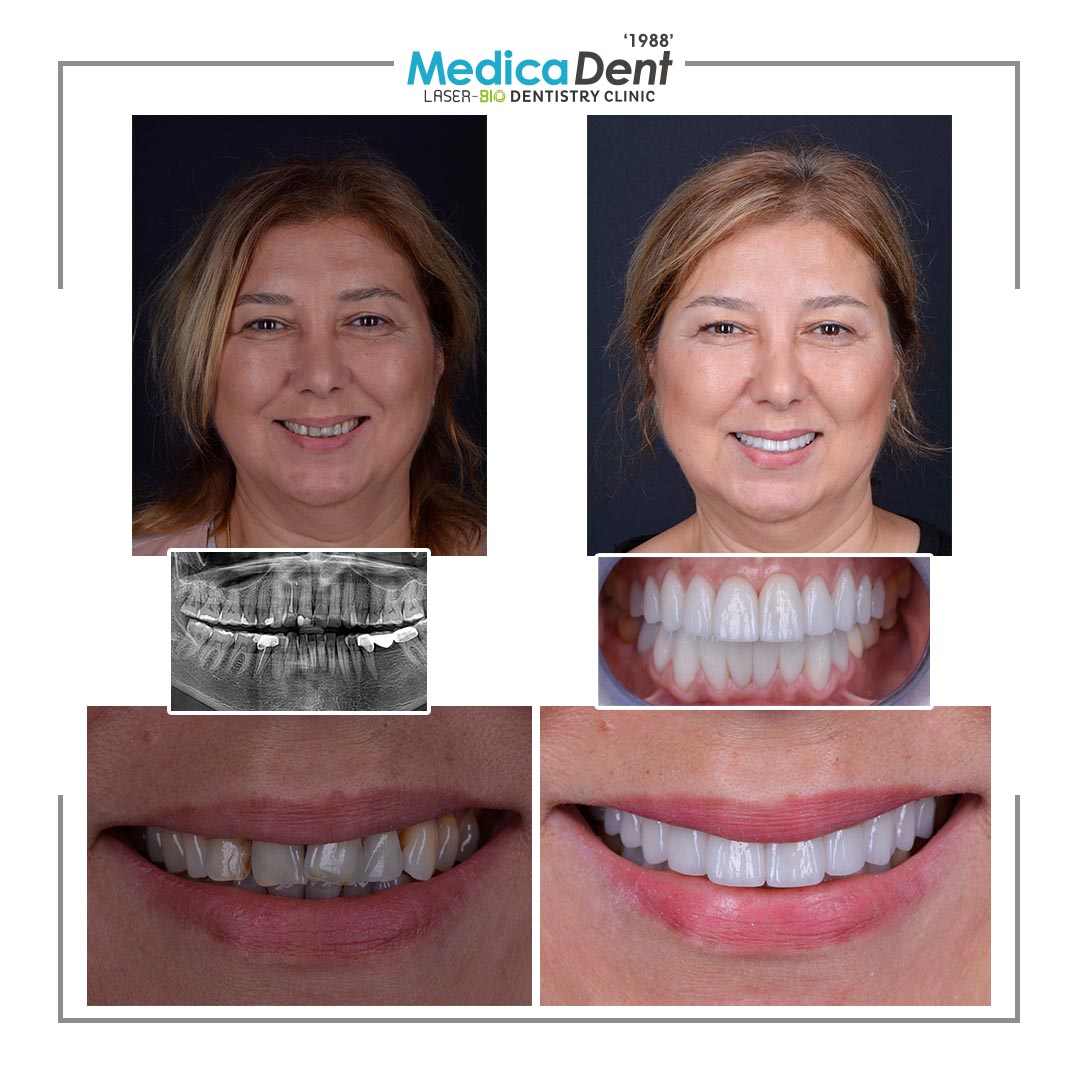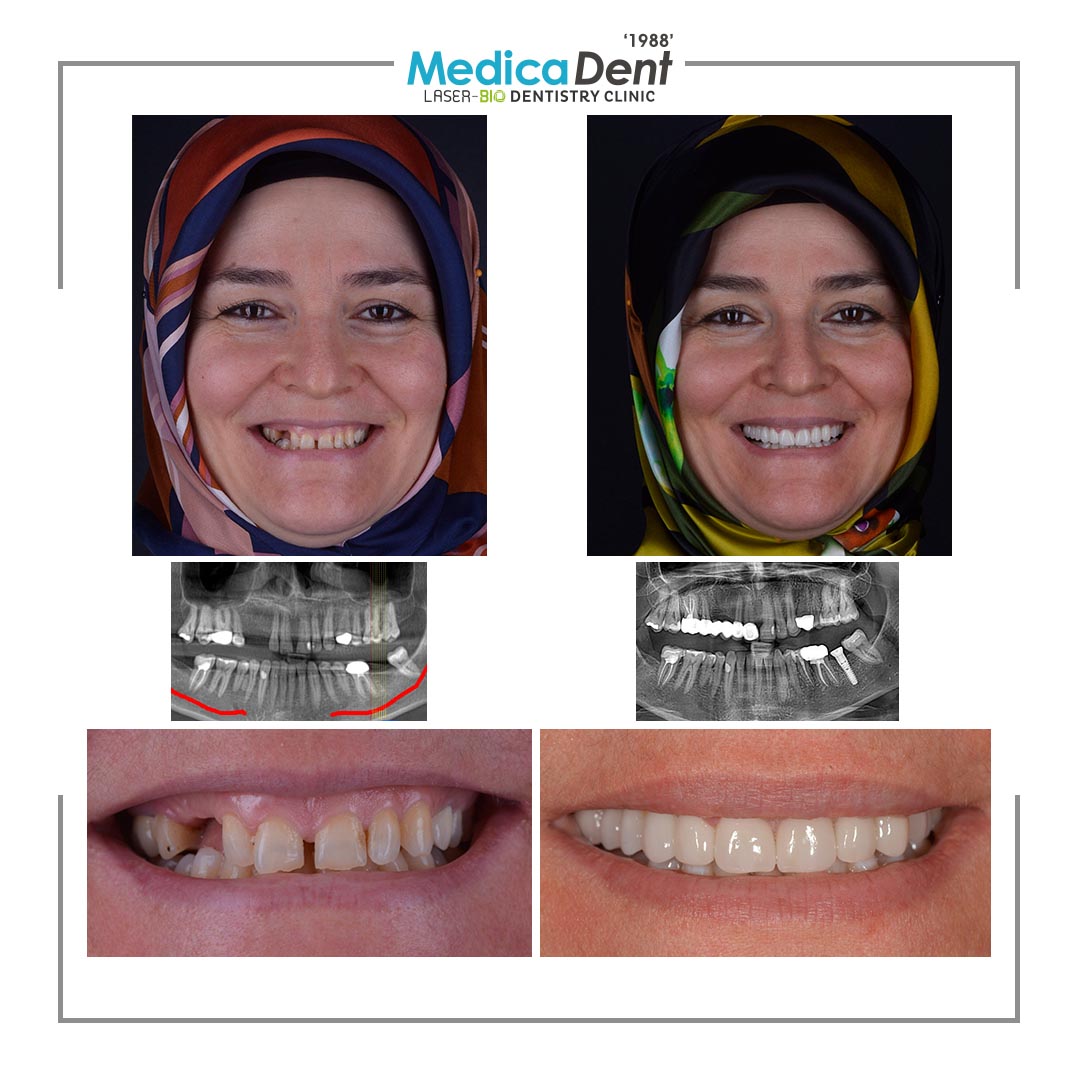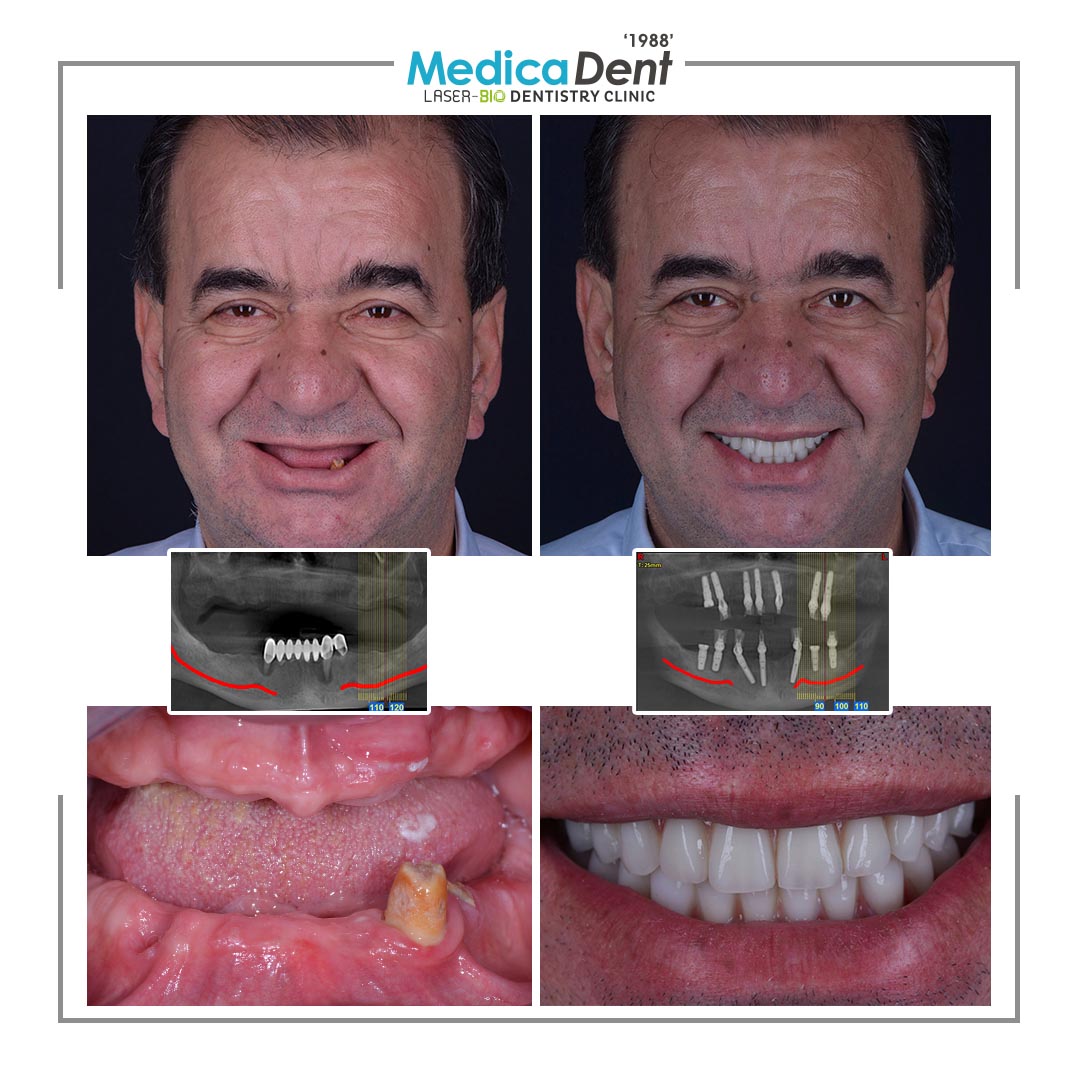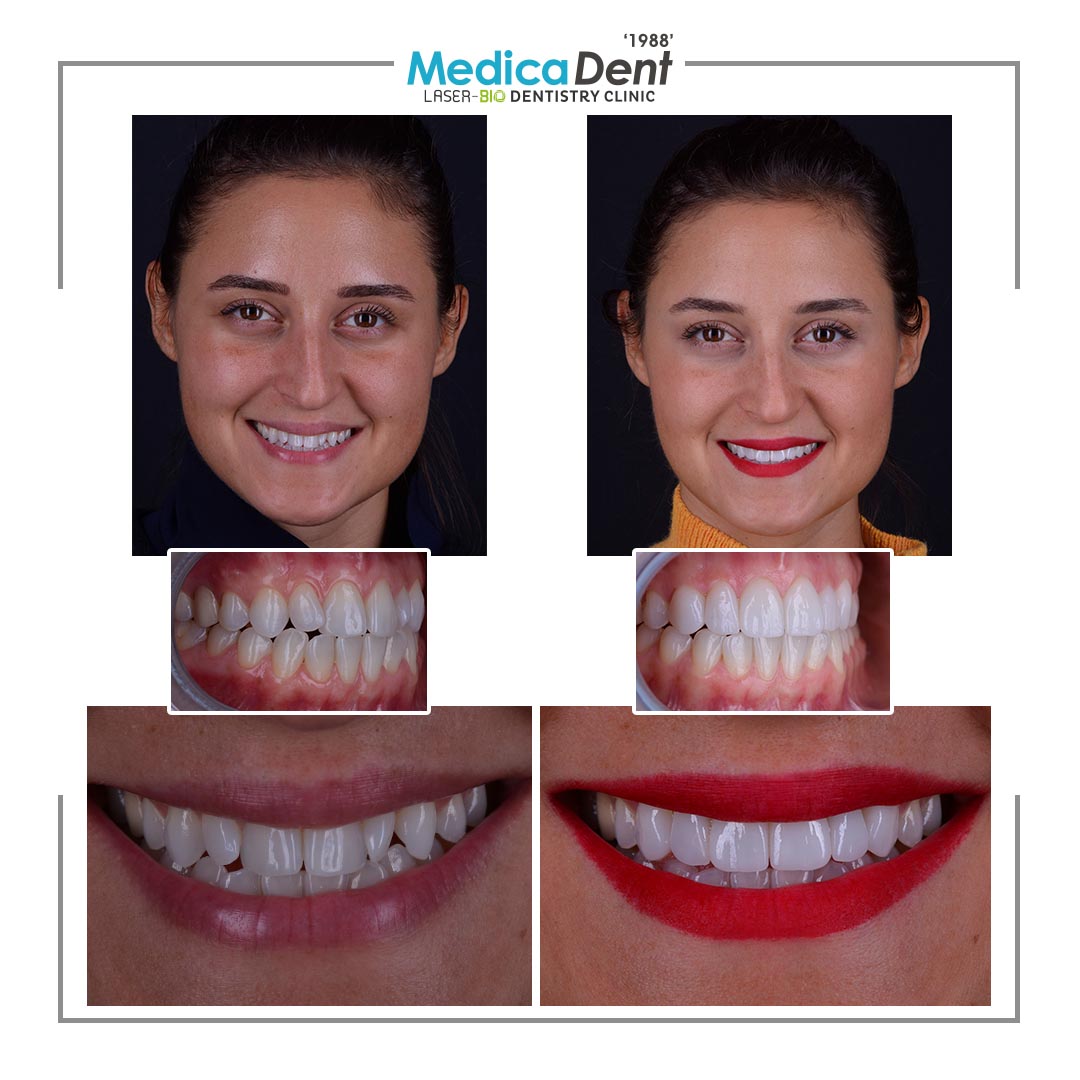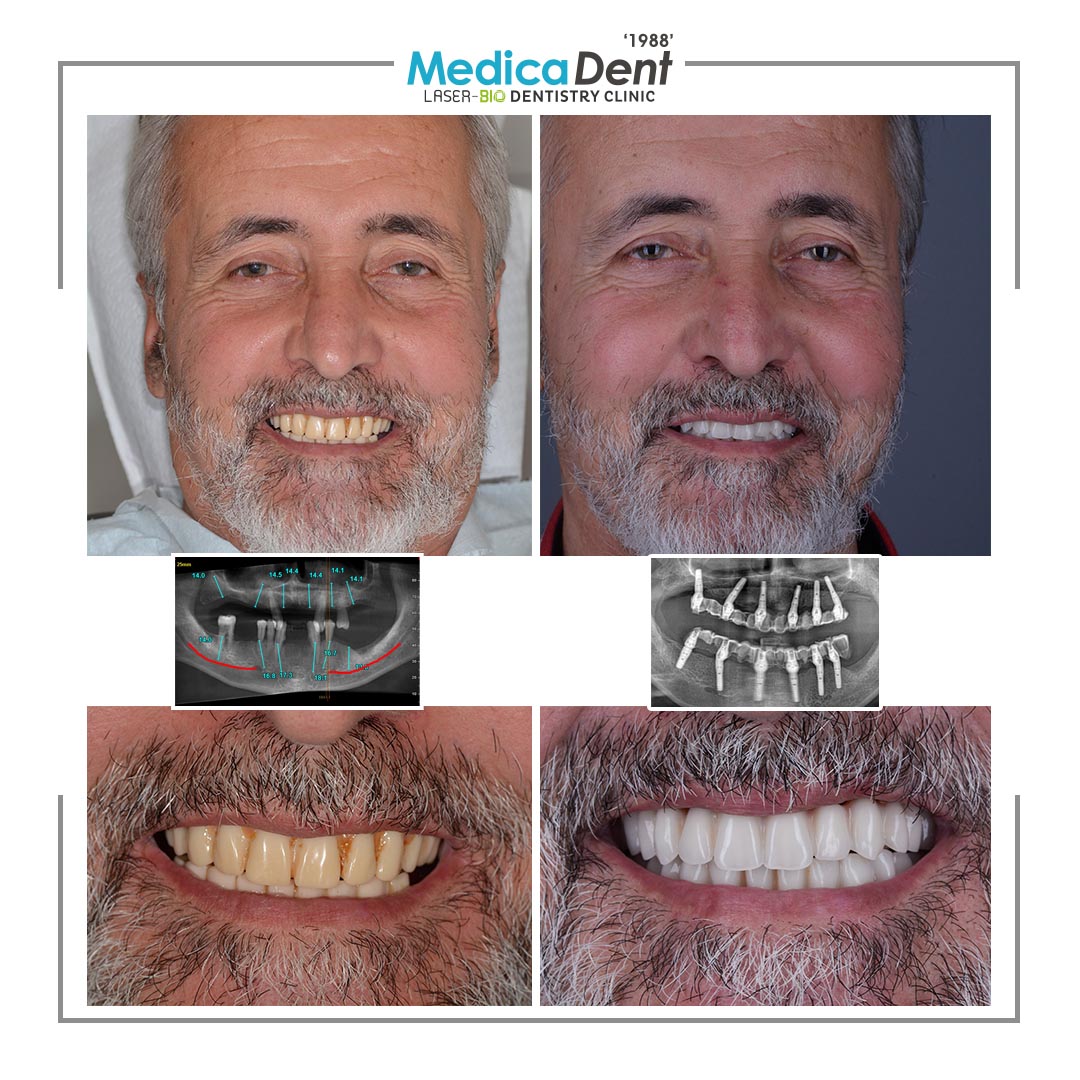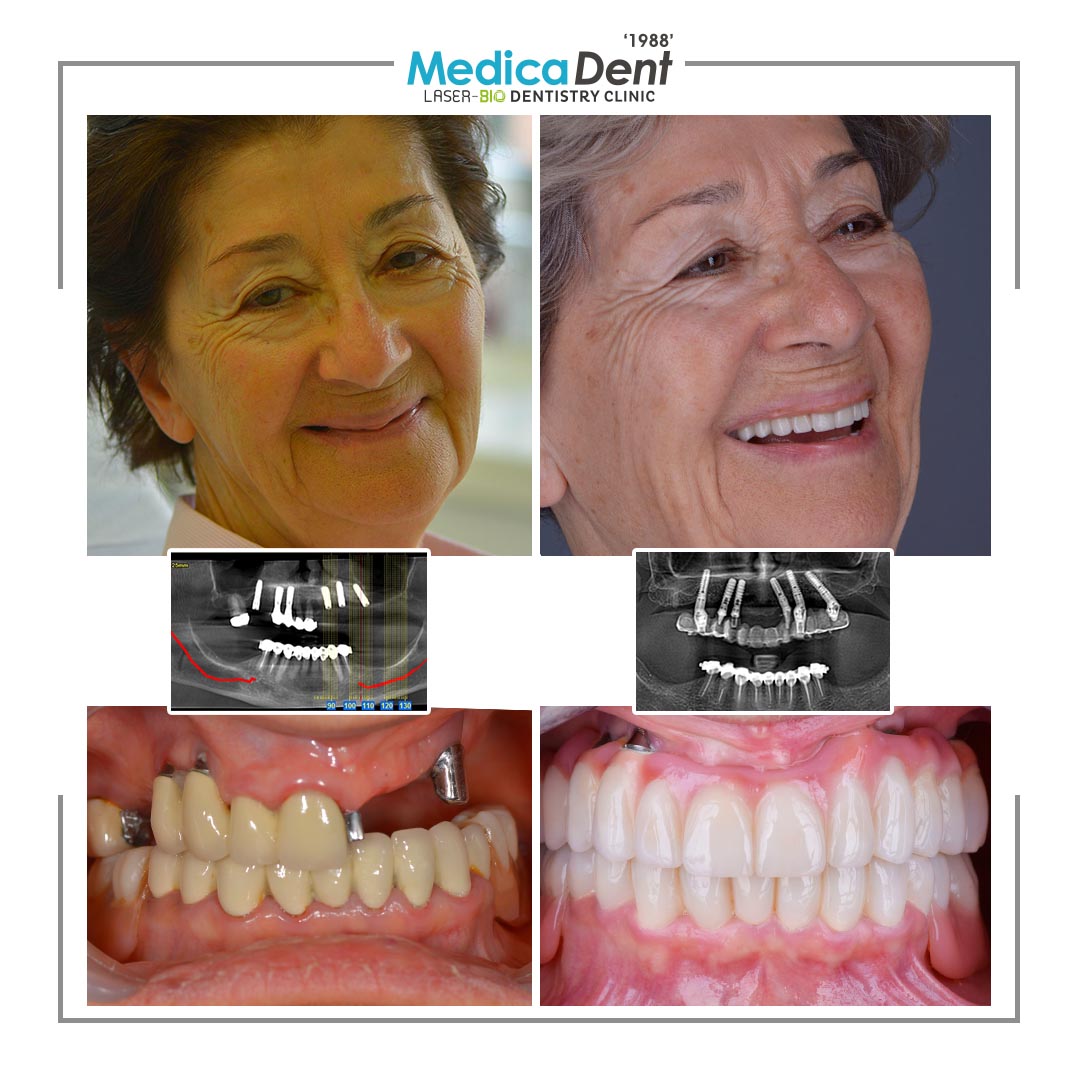LASER BIO DENTAL IMPLANTS
Laser Bio Implant Application: With the treatment protocol that stimulates tissue biology in the bone and soft tissue with laser, a high rate of implant integration and treatment without pain and swelling is possible.
Biological Implant Materials
- We use a scientifically proven ‘clean implant’ certified (cleanimplant.com/implants) titanium Bredent implant. click here
- We use biological whitesky zirconium implants click here
BIOLOGICAL IMPLANT
Patients demand aesthetics
Patients demands for aesthetics are increasing together with the growing acceptance and use of implantology in large sections of the population as the best solution for replacing extracted teeth. Attitudes towards dentists are slowly changing in patients’ minds. The idea of a place where painful teeth are repaired is fading and its place being taken by the idea of the dentist as a health manager who also has a significant influence on the appearance and well-being of the teeth.
whiteSKY zirconia implants offer reliable aesthetic results
In this context, the whiteSKY zirconia implants offer new opportunities for offering demanding patients high quality and, above all, aesthetic dental restorations. Their appearance will not be affected by dark shades, even in cases of extremely thin gingiva.
Special features
For highly aesthetic restoration of the front teeth or for immediate restoration-scientifically proven and established in practise. Since zirconia does not have any metallic properties, whiteSKY is also the perfect solution for patients with sensitivity to metals.
LASER BIO DENTAL IMPLANTS
Dental implants are artificial tooth roots used to support a restoration for a missing tooth or teeth, helping to stop or prevent jaw bone loss. The implantation procedure is categorized as a form of prosthetic (artificial replacement) dentistry, but also is considered a form of cosmetic dentistry.
People who have lost teeth might feel too self-conscious to smile or talk. Additionally, biting irregularities caused by tooth loss can have a negative effect on eating habits, leading to secondary health problems like malnutrition.
By replacing missing tooth roots, dental implants provide people with the strength and stability required to eat all the foods they love, without struggling to chew. Additionally, they help to stimulate and maintain jaw bone, preventing bone loss and helping to support facial features.
Teeth are lost because of:
- Tooth decay
- Root canal failure
- Gum disease (Periodontitis)
- Trauma to the mouth (tooth injury)
- Excessive wear and tear
- Congenital defects
Depending on your situation, our dental professional will advise you of how long the entire treatment process will take, how many appointments will be necessary and what you can expect after each procedure.
During the consultation, options for local anesthesia (to numb the affected and surrounding areas) and sedation dentistry, if necessary, also will be discussed.
The use of lasers in implantology
Surgical lasers can be used in a variety of ways with regard to implantology, ranging from placement, second stage recovery and gingival management, through to the treatment of peri-implantitis. Within this range of usage, dependant on wavelength employed, exists the ablation of target tissue and the ability to reduce bacterial contamination.
Whilst there is a general acceptance that lasers are capable of accurate cutting of materials and tissue, there is no evidence-based advocacy as to the use of any laser wavelength in producing a fully-prepared osteotomy site for the placement of root-form dental implants.
However, there are anecdotal reports of the use of erbium YAG laser to establish a controlled incision of overlying gingival tissue and to initiate a breach of the cortical bone plate, prior to the use of conventional implant drills.
Such techniques, although intrinsically correctly based on predictable laser-tissue interaction, run the risk of scepticism amongst practitioners more allied to a conventional surgical approach to implant placement
Placing Your Implant(s) - The Procedure
Today’s dental implant restorations are virtually indistinguishable from other teeth. This appearance is aided in part by the structural and functional connection between the implant and the living bone. The procedure is typically performed in a single sitting but requires a period of osseointegration.
Osseointegration is the process by which the implant anchors to the jaw bone. An osseointegrated implant takes anywhere from three to six months to anchor and heal, at which point your dentist can complete the procedure by placing a crown restoration. If osseointegration does not occur, the implant will fail.
Dental implantation, which is performed to replace missing teeth, can be done any time after adolescence or when bone growth is complete. Certain medical conditions, such as active diabetes, cancer or periodontal disease, may require additional treatment before the procedure can be performed.
FAQ
If there is enough bone, the choice of dentists is always to apply an implant in place of every lost tooth. However, in some cases, two implants can be placed and bridge prosthesis can be made on them. The number of implants to be placed can be determined only after the clinical and radiographic examination of the physician.
As an implant brand, it is beneficial to choose implant systems that:
- attach importance to R&D studies,
- have been shown to be successful in the long term,
- do not have technical support issues and
- offer sufficient options for prosthetic superstructure.
However, successful implant application is also related to the patient’s healing potential, smoking, the state of oral hygiene, the presence of systemic diseases such as diabetes, and the surgical skill of the physician.
Today, even patients who have a completely edentulous mouth can get rid of removable prostheses if they have enough bones implants can be applied directly, or they can be applied after bone formation. It is very difficult for the patient to use a denture with a toothless lower jaw, because a tongue that plays constantly inside the mouth, gives a lot of trouble to the patient during chewing, talking or eating. With the tongue, lips, cheeks and chewing movements in the lower jaw, problems related to the prosthesis that can be eliminated with implant applications. In addition, problems such as nausea caused by the design that closes the palate to ensure the retention of the upper total prosthesis are eliminated. In this case, fixed or implant supported prostheses can be applied. The complaints of playing and nausea disappear in both types of prosthesis.
Replacing the lost tooth with new implants is important for the health and function of the surrounding teeth and the entire chewing system. When a tooth in the natural tooth form that performs its aesthetic and chewing function is obtained, the surrounding teeth are prevented from slipping into the lost tooth cavity and deformities in other teeth. In addition, bone loss that occurs over time in the cavity formed after tooth extraction is prevented when the implant is applied.
In patients with single tooth loss or multiple tooth loss, the classical bridge construction for the lost cavity involves cutting, shrinking and loss of substance. However, when the implant is applied, the implant that imitates the root of the missing tooth is inserted without the need to cut any teeth, and then the upper prosthesis (tooth) is made on the implant and the toothlessness is solved.
Implants are biocompatible. Implants have no known side effects or allergic reactions in the human body, but some patients may not be suitable for implant application.
Implant surgery without flap cuts and stitches is called flapless implant surgery. In this procedure, healing is faster and more comfortable as implant surgery is performed without damaging the soft tissues. Not all cases are suitable for this technique. Your doctor will make the decision on this matter at the end of your first examination.
It is important to apply cold at certain intervals to the area treated after implant surgery, according to your physician’s recommendation. This will prevent edema and swelling. Low dose laser applications applied by your physician to use medications regularly and to accelerate recovery are also important during the recovery period. During this period, your oral care should be very good. Poor oral hygiene is one of the leading causes of implant failures. You should see your dentist periodically during the recovery period.
You should stay away from hot foods and beverages for the first few days after the operation. You should consume more soft and nutritious foods. After the healing of the wound is completed, there are no restrictions on eating and drinking.
Just as we brush our natural teeth regularly, we should also brush the implanted area. You should add routine use of toothbrush and interface brushes to your care with toothbrush and paste. Thus, the amount of bacteria formed in the mouth can be reduced. The use of mouthwash will contribute to oral hygiene.
It is called “immediate implant application” to extract the tooth and make an implant immediately. It is a technique that can be preferred when suitable conditions are provided. The greatest risk in this procedure is the infected tissues located in the tooth extraction socket. The possibility of selectively cleaning infected tissues is given to us by Er: YAG laser. If the correct technique is applied in implant applications made immediately after extracting, the probability of bone loss decreases.
The density, height and thickness of the bone in the area to be implanted are important. This directly affects the success of the implant. In cases where the bone is not sufficient, it is necessary to create bone with different techniques (using bone grafts) to increase the amount of bone. For this procedure, sinus lift, block grafting and bone formation in the horizontal and vertical directions in the lower jaw can be performed.
Depending on the number of your dental deficiency, your doctor will decide what kind of temporary prosthesis will be made. If you have too many teeth deficiency, you can use a temporary removable prosthesis or a fixed prosthesis according to the method applied. For full toothlessness and in some cases partial toothlessness, it is possible to make a permanent temporary tooth by applying Bredent Fast & Fixed technique.
Bone loss in the body and bone loss in the mouth are different health problems. Even if there is a high rate of bone loss in the body, it can be a very good bone in the mouth, and even if there is a very good bone in the body, the level of bone in the mouth may be insufficient.
Receivable. However, implants can only reflect light in their immediate surroundings, which can cause poor image quality in the immediate vicinity.
Titanium used in implants is a very advanced industrial product obtained with 99.9% purity. Therefore, the entrance prices to the practice are high. Whether the price of implant treatment is high or low depends on the brand of implant applied, the auxiliary surgical materials used during the procedure.
Depending on the size of the jaw and the method to be applied, it is envisaged to receive 4-6 implants in the lower jaw and 6-8 in the upper jaw.
It is absolutely necessary to apply 2-4 implants in the lower jaw and at least 4 implants in the upper jaw.
Implant supported fixed teeth care is very similar to the maintenance of natural teeth. You should brush your teeth at least twice a day, in the morning and in the evening. • You should clean the area between the prosthesis and the gingiva regularly with interface brushes, special threads and a toothbrush as recommended by your dentist. • During the first year, you should visit your dentist every 3-6 months for dental calculus cleaning and control.
